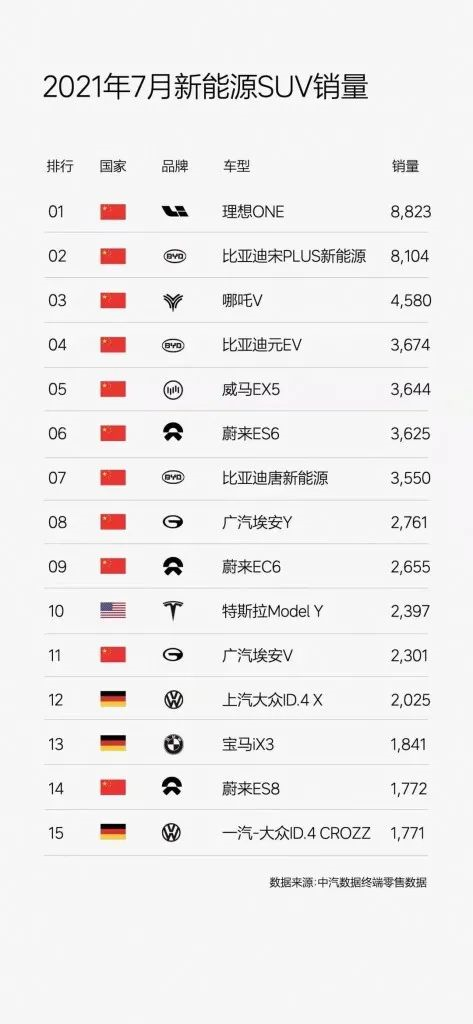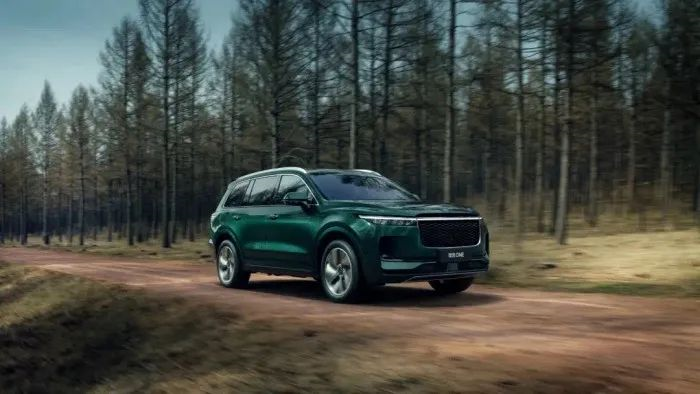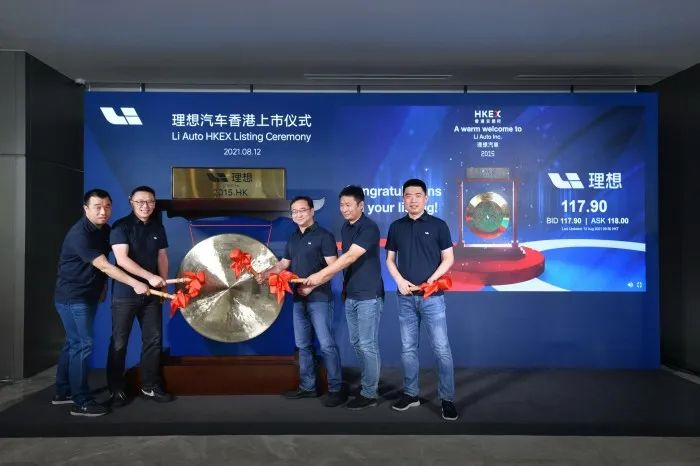Author: Michelin
In 2015, there were special numbers for the Ideal Automobile.
In 2015, Ideal Automobile was officially established, and the situation of the top three new forces began to emerge. On August 12th, Ideal Automobile also landed on the Hong Kong stock market with the code 02015.HK, becoming the second new energy vehicle company after XPeng Motors to be listed on both the US and Hong Kong stock markets.
A year ago, Ideal was listed on the Nasdaq. At that time, Ideal Automobile had just started delivery for 8 months, and had delivered 9,500 new cars in the past half year. It can be said that with hope and uncertainty, it embarked on the road of financing in the US stock market.
Now, only 378 days have passed since the listing on the US stock market, but in the just-ended July, the monthly delivery of Ideal ONE reached 8,589, a year-on-year increase of 251.3%, and became the best-selling new energy SUV model in July.

This is still troubled by production capacity, chip shortage, and other issues. According to Shen Yanan, co-founder and president of Ideal Automobile, the actual monthly order volume has exceeded 10,000. If we look at the market performance, Ideal Automobile’s return to the Hong Kong stock market can be described by the phrase “returning in triumph”.
However, the capital market doesn’t seem to buy it.
Last month, XPeng Motors, which went public in Hong Kong, raised HKD 14 billion in financing with a financing subscription multiple of 14.73 times. In comparison, Ideal Automobile, which originally planned to raise HKD 15 billion, eventually sold at a price of US$118 in the US stock market and raised HKD 11.55 billion. During the public offering phase, it was subscribed 5.5 times.
On the day of listing, Ideal Automobile also encountered the same listing price drop as its old friend XPeng Motors. On August 12, the price of Ideal Automobile-W shares fell by 2.12% at one point, with a closing price of HKD 117, a 0.85% decline from the opening price. Does the Hong Kong stock market not care about the hot Ideal Automobile?
Market performance ≠ Capital performance
If one sentence is used to describe the reason why Ideal Automobile has achieved success, it is precise grasp of users.
In the early years, everyone had a low acceptance of new energy vehicles and worried about the difficulty of charging and short mileage. Therefore, Ideal chose the extended-range route that is less reliant on charging piles; aiming at the pain points of home users’ needs for car space, value for money, and product strength, the Ideal ONE model has been focused on for 6 years, and it has been developed into an explosive family car model.

However, “one man’s meat is another man’s poison”.The range extender technology has helped Ideal Automotive open up the market and even create a new one. As a result, more and more new competitors are emerging, with BYD, Seres, and Ranz all launching range-extended cars. However, for capital, the single technology of range extender clearly lacks the imagination of the pure electric route. In the first half of this year, sales of new energy vehicles exceeded one million units, most of which were pure electric vehicles. In the eyes of capital, the height of the ceiling seems more important.
In comparison to a variety of competitors, Ideal ONE, which has helped Ideal Automotive establish itself in the market, has accurately targeted the needs of household users. However, the potential risks of relying on a single explosive car model have made many people hesitant.
Moreover, while the new energy market is hot, Ideal Automotive’s sales are rising, and although cost management has been maximized, the financial report shows that the current profit is still negative in the face of R&D investment.
In the face of this protracted war of manufacturing, the current results are important, but continuous investment in R&D and improving the competitiveness of next-generation products are essential to driving the brand forward. This is also why XPeng Motors chose to list in both Hong Kong and the mainland.
Fortunately, both investors and automakers value long-term development more than short-term earnings. Ideal’s plans for the future can also be seen in its Hong Kong IPO prospectus. The prospectus shows that of the HKD 11.55 billion raised in the IPO, 20% will be used for the R&D of high-voltage pure electric vehicle technology, platforms, and future models; 10% will be used for range-extended platform development; and 15% will be used for autonomous driving R&D. The total investment in R&D accounts for 45%, close to half of the funds raised.
The Q1 2021 financial report shows that among the top three new forces in the industry, NIO’s R&D investment accounts for 15.3% of total revenue, XPeng accounts for 29.5%, and Ideal accounts for only 11.8%, the lowest proportion of R&D investment. This is related to Ideal’s previous choice of a single technology and model. However, Ideal clearly does not want to follow a one-dimensional strategy.
At the beginning of this year, Ideal Automotive released an internal memo that outlined its 2025 plan to achieve a 20% market share, which means reaching an annual sales volume of 1.6 million units. This clearly cannot be achieved with just the range extender technology. The funds raised this time are earmarked for specific plans for the R&D of pure electric double platforms and range-extended platforms, supplementing the shortfall in R&D investment.For the future plans, Ideal has put forward two parallel technological paths. One is to continue the current range-extended technology and launch the second-generation range-extended platform, X platform, in 2022. The full-size luxury smart SUV previously revealed will also be equipped with X platform and released in 2022. The other path is the pure electric platform, which includes high-voltage pure electric Whale (whale) platform products and high-voltage pure Shark (shark) platform products. Both pure electric platforms will be launched in 2023, targeting families as the main consumer group. The supporting facilities for the pure electric platform, the 400kW ultra-fast charging stations, will also start to be laid out in the second half of this year, ensuring that users can charge their pure electric cars anytime, when the pure electric car models are launched in 2023.
“Once you enter the arena, you have to repay your debts sooner or later.” For Ideal, the range-extended technology has helped the company stand firm in the car-making race, but it also means that Ideal has to start from scratch in pure electric vehicles, experiencing a series of challenges such as pure electric platform research and development, product positioning, production line expansion, and supply chain integration. In this fundraising campaign, 35% of the raised funds will be used for business expansion, and a portion of it is related to the pure electric vehicle business, such as the previously rumored acquisition of Beijing Hyundai’s first factory by Ideal, which will start producing Ideal’s pure electric vehicles in 2023.
Ideal’s weaknesses are not limited to the absence of pure electric models. Compared to other new car-making forces, Ideal has invested relatively less in intelligence. The 15% of the funds for automated driving research and development are also aimed at making automated driving and intelligent cockpit the next selling points. The 2021 Ideal ONE, as opposed to the previous cooperation with Mobileye, chose Horizon as its chip partner, which was considered in a self-developed manner. By choosing more open chips and developing L2+ADAS functions, Ideal will launch its own NOA function in the future.
By 2023, the fiercely competitive pure electric vehicle market will no longer be a blue ocean. Various pure electric vehicle brands will have gained certain market appeal. How will Ideal’s pure electric vehicle stand out? Perhaps, the heavy investment in research and development and the IPO, will lay the groundwork for Ideal to face the future.### Final Thoughts
By 2023, the ideal competitor in the automobile industry will be no longer limited to just pure electric cars. New energy vehicles will need to compete with combustion cars to secure their position in the market.
Making a car is a fierce and lengthy war. It’s hard to evaluate Ideal Automotive’s performance based on just one day of market exposure. The use of raised capital and future product planning will be crucial for Ideal’s success.
As for the future, will Ideal return to A-share market? Shen, the CEO, responded that it is currently being discussed internally.
This article is a translation by ChatGPT of a Chinese report from 42HOW. If you have any questions about it, please email bd@42how.com.
